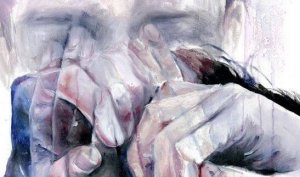Anosognosia: The Inability to Realize One's Inabilities

In 1895, Von Monakov described the case of a patient who suffered partial blindness following an injury. What stands out about this patient is the lack of awareness of such deficiency. However, it was not until 1914 at the Paris Neurological Society when Babinski presented the case of two patients with left hemiplegia and a total lack of awareness of their motor defect. In turn, he introduced the concept of anosodiaphoria, referring to cases in which there is a total disregard for the disease.
Definition of anosognosia
Prigatano, in turn, defines Anosognosia as a clinical phenomenon whereby a patient with a brain dysfunction seems unaware of the deterioration of the neurological and/or neuropsychological function, which is apparent to the physician and others. This lack of awareness cannot be explained by hyperarousal or a generalized cognitive impairment or by a mechanism of self-denial of the patient. The causality of the injury is indifferent to the possibility of showing anosognosia during the course of the condition. Thus, this anatomically affects brain regions involved in awareness, resulting in an impaired ability to recognize or appreciate the severity of deficits. Our “self”, understood as the awareness of ourselves, is pushed aside and cannot integrate the information about the injury as part of us. It’s as if it didn’t exist.

Diagnostic criteria and comorbidity
Although there are no specific criteria for diagnosis, the Consortium in Clinical Neuropsychology (2010) published the following criteria, in order to aid in its identification and classification:
- Disturbance of consciousness of having a physical, neurocognitive and/or psychological deficit or suffering from an illness.
- Alteration in the form of denial of the deficiency, evident in statements like “I don’t know why I’m here”, “I don’t know what’s wrong with me”, “I’ve never been given these exercises correctly, no wonder I don’t do them well”,” It’s others who are telling me I’m sick”
- Evidence of deficiencies through assessment instruments.
- Recognition of distress by relatives or acquaintances.
- Negative influence on activities of daily living.
- The distress does not occur in the context of states of confusion or altered states of consciousness.
This distress is comorbid with other disorders:
neurological: neurovascular disorders, Alzheimer’s dementia, mild cognitive impairment, tumors, fronto-temporal dementia, traumatic brain injury, cortical blindness, epilepsy and posterior cortical atrophy. –
psychiatric: schizophrenia and personality disorders. From a symptomatic point of view, anosognosia may occur in cases of hemineglect, prosopagnosia, amnesia, Korsakoff syndrome, Anton syndrome, hemiplegia, dysexecutive syndrome, constructive apraxia, aphasia Wernike…
Treatment and consequences
Presently there is no evidence of any effective treatment. Being a disease that has a variety of manifestations, some authors define it as a disease, a syndrome or a symptom; nevertheless, there is a certain consensus on its definition. Anosognosia can appear in multiple neurological diseases and it seems that it is specific for each deficit. Given the practical implications in daily life for people who suffer from it, it is important to carry out an early identification of this. People who have it may have:
- Difficulties with adherence to treatment.
- Poor prognosis regarding the evolution and rehabilitation the disorder.
- Risk of suffering falls or injuries due to lack of awareness.
- Alterations of mood caused by the confrontation of the information: irritation, anger, depression.
- Lack of monitoring pharmacological and medical treatments.
- Lack of social understanding of their status and their illness.
- Lack of social and community support.
Image courtesy of Patrick Hoesly
This text is provided for informational purposes only and does not replace consultation with a professional. If in doubt, consult your specialist.








